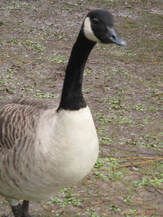- About
- Contact
- Blog
- CONSUME
- GALLERY
-
PERAMBULATIONS, Etc.
- Old Parcels Office, Scarborough
- Ghent
- White Cube
- Cornerhouse, Manchester
- Venice 2019
- Tectonics
- Leeds City Art Gallery
- Hayward Gallery, London
- Hull University Art Gallery
- Whitney Gallery, New York
- Royal Scottish Academy, Edinburgh
- Talbot Rice Gallery, Edinburgh
- Fruitmarket Gallery, Edinburgh
- Modern One & Two, Edinburgh
- Groeningemuseum, Bruges
- Humber Street Gallery, Hull
- Renwick Gallery, Washington DC
- Arenthuis, Bruges
- Ropewalk Gallery, Barton on Humber
- Geementmuseum, Den Haag
- Ferens, Hull
- Crescent Arts, Scarborough
- Walker Art Gallery, Liverpool
- Hepworth Wakefield
- Yorkshire Sculpture Park
- Stedelijk, Amsterdam
- Henry Moore Institute
- Louisiana
- SMK Copenhagen
- Yorkshire Sculpture International
- Tate Modern
- Whitworth, Manchester
|
I have to confess the constant diet of moaning, criticism, sniping and general whining that appears in this blog might be a tad wearisome. So today I am taking a different approach. Leaving the grim world of total political failure behind for a day, here is a photo journal of one of my daily walks. This one's about three miles long and reflects the variety of landscape in the heart of Scarborough. There's always something uplifting about it, even on a grey, overcast day like today (walking 11.15 to 12.15).  A stone head looks wistfully out from the damp fern sprouted wall of the disused Dean Road cemetery chapel. It's a fine building, but needs a lot of money spending on it. I think it would make a fine house, though it could possibly be haunted.  One of the more grandiose memorials in the cemetery, and the only one so far as I know bearing an image of the deceased is this one, commemorating one Thomas Whittaker, J.P. a 'temperance advocate' who cheers me up everyday with the message 'Tell me not what strong drink has been nor what it is intended to be, I know what it is now, it is Britain's curse, it is the God of this nation.' I'll drink to that.  From the cemetery I immediately enter Peasholm Glen, an elongated park which follows a stream down to the sea. It's usually full of grey squirrels, but there weren't so many around today. They might appear if I got out a bag of nuts of course.  But there's always Canada Geese (and ducks, Herring Gulls, Moorhens, etc., etc.) once one has reached Peasholm Park lake. This is the place where each summer famous naval battles are recreated and people wonder what happens to the students who are inside the model boats when they sink. Then it's up onto the cliffs of the North Bay, looking towards the North York Moors and in the far distance to Ravenscar. Once upon a time Scarborough had its own pleasure pier (it would have appeared in the foreground) but it was washed away in a storm in the early 1900s. And looking to the right of the previous view is Scarborough Castle, a splendid ruin, thanks mainly to the parliamentary forces' bombardment during the Civil War, when it was in the control of the Royalist forces. After the Civil War, Parliament decreed that the west wall be destroyed. Perhaps they feared they hadn't quite won the war?  Next, coming towards the end of my walk is Anne Bronte's grave. I am sure that Vincent van Gogh would have stood on this exact same spot when he came to Scarborough (as will be revealed in my forthcoming publication van Gogh & Scarborough: The Lost Letters) The final view from this walk is in St Mary's churchyard, above the old town, overlooking the South Bay. Two bays in a day? What could be more satisfying?
1 Comment
ROBERT THAIN
2/2/2021 20:44:42
The public gardens in Bournemouth were once called "The Lower Pleasure Gardens".
Reply
Leave a Reply. |
Archives
March 2024
|




 RSS Feed
RSS Feed